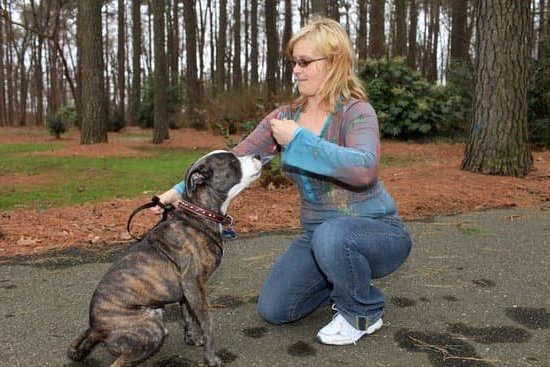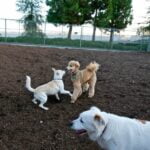Introduction to Dog Training
I train dogs to help owners form better relationships with their canine companions and ensure that their furry friends lead healthy, well-behaved lives. Dog training offers both physical and mental benefits for people and their pets; including improved communication between owners and pets, more exercise, increased safety and fostering a more peaceful home environment.
In addition to these benefits, training your dog can be a lot of fun! There are various tactics used by professionals when it comes to teaching dogs new things like obedience commands or tricks. These include clicker training, operant conditioning, classical conditioning, positive reinforcement/punishment as well as traditional methods like verbal commands and hand signals.
It is important to understand the way your dog learns in order to effectively train them. Every canine has their own unique behavior that can be influenced by breed, age, temperament or experience level. By understanding how they learn best (Positive Reinforcement? Verbal Commands? Hand Signals?), you can form stronger bonds with your pup as you teach them how to behave as part of your family.
Setting Goals for Dog Training
When beginning dog training, it is essential to set specific goals. This helps focus the lesson plan and ensure that all objectives are met. When setting goals, it is important to make sure that you break down large tasks into smaller achievable goals. For example, a goal of teaching your dog to sit would first need to be broken down into steps such as teaching the cue ‘sit’, associating the command with an action, associating a reward with the action and finally maintaining the new behavior over time.
It is also important to prioritize your objectives. For instance if your goal was to teach several commands during one lesson than you would want to work on teaching the most important ones first and build up from there. Making sure that each individual task is achievable within a certain period of time will help in creating successful lessons long term. Additionally, when setting goals for dog training, it can be helpful to devise a timeline for each task – decide how many times per day or week you wish to practice each specific set of objectives and divide time accordingly throughout the days/weeks ahead.
Making Dog Training Fun
As a dog trainer, I am committed to making training fun and engaging for both the dog and their owner. There are many methods I use to keep dogs interested in the process of learning. Reward-based training is often effective in getting a pup to comply with commands. Rewarding good behavior with treats or praise promotes positive reinforcement that encourages dogs to learn quickly and stay engaged. It is also important to use rewards wisely – break them up into small easy-to-give snacks and use other rewards such as petting, playing, verbal praise or toys as reinforcements as well. Additionally, stimulating activities like walks, playful distractions and puzzles can help keep a pup’s attention during lessons. Training shouldn’t be done all at once – break it up into smaller pieces so that the puppy can focus on mastering one command before moving onto the next. Finally, it’s important to have plenty of patience and optimism when working with dogs; consistency pays off when you are looking for results!
Proper Equipment and Tools for Training
There are several types of equipment and tools that can be used to train dogs effectively and safely. Positive reinforcement is the primary method recommended by most trainers, so things such as treats and toys should be readily available during sessions. Clicker training is often recommended by trainers as well, so a good quality clicker should also form part of your toolkit. A leash and collar is essential for obedience training and control over movement in public places. Dog treats should also be included, particularly for rewards in positive reinforcement exercises as some breeds respond better to food than toys as a reward system.
Another crucial tool for effective training is verbal cues – an area where we must shaper our communication with the dog being trained. To this end, commands such as ‘sit’, ‘stay’, ‘heel’ and other appropriate verbal phrases should become intuitive for both you and your dog through regular practice at home or in an area familiar to the animal. Repeated use of these commands will soon help the animal become familiar with what you expect from them when they hear certain words, making it much easier to communicate with each other down the line.
Teaching Basics
I train dogs to respond to commands such as “sit”, “stay”, “come” and “down”. Additionally, I teach them how to properly walk on a leash and off-leash recall.
In order for these behaviors to become reliable, I utilize appropriate reinforcement techniques to simultaneously reward the dog for desired behaviors like sitting or coming when called. Some of these techniques include using treats or toys and providing verbal praise in an enthusiastic manner.
To ensure that responses occur quickly, it’s important for me to use a firm but gentle tone of voice while also incorporating body language, like pointing my finger at the dog while I give a command. In this way, I communicate with my canine students both audibly and visually so they can understand what is expected of them.
Troubleshooting common problems
I train dogs by troubleshooting common problems and understanding unwanted behavior. Learning how to read a dog’s body language and prevent difficult behaviors before they start is an important part of my training process. I strive to create an environment where the dog feels safe and secure, so that it reacts positively to training cues.
To address unwanted behaviors, I use positive reinforcement techniques such as praising the desired behavior rather than punishing unwanted behaviors. This way, I am teaching the dog what it should do instead of what it shouldn’t do. This is key in building trust between the canine and me.
I also strive to provide adequate exercise for each dog in order to keep its mind engaged, while providing mental stimulation with regular games or tasks during our sessions. Establishing rules and routines will help a pet remain calm and better obey instructions when needed. Lastly, getting out into nature not only provides your furry friend with some fresh air but also presents opportunities for learning new behaviors like following scent trails or retrieving items.
Training with Distractions
I train dogs to respond appropriately while dealing with multiple distractions. This involves teaching them impulse control, so that I can take them off-leash in various challenging environments and not have them become too overwhelmed or overstimulated by any of the sights, sounds, and smells around them. It’s also important for me to help dogs address any startle and fear reactions they may experience when faced with new situations. The method I use for this is to gradually expose the dog to different distractions in a planned way and reward calm responses to stimuli. For example, if I am working with a dog who is afraid of noises, I might begin at a low threshold of sound volume and gradually increase it over repeated exposures. The same is true of introducing other environmental triggers, such as crowds of people (or other animals). Through my training approach, owners can keep their pet companion safe and emotionally secure even when out in public places.
Taking Training Outside
I specialize in dog training and behavior modification for all breeds, ages and temperaments. My specialty is in working with dogs in a wide range of outdoor environments – from parks to beaches! Practicing skills outside allows us to create a stronger bond and an even greater understanding between the two of us. I understand that different terrains present different obstacles and behaviors, so I make sure to adjust my approach accordingly while teaching your pup basic obedience commands like ‘sit’ or ‘heel’. We can also work on specific problems like barking, jumping up or aggression through learning how to take a calm walk around the neighborhood or relearning how to leash pull properly. By having a variety of solutions tailored to every dogs unique needs, I am confident I can help you and your pup have a more enjoyable relationship as well as empower you to succeed with one another.
Keeping Training Sessions Short
One of the biggest benefits of short, frequent training sessions is that they keep the dog’s attention. When a session does not last longer than 10 minutes, it prevents the dog from becoming bored and frustrated. By making sure each session serves as an exciting new challenge for your pet, you can keep them engaged in learning and reinforce their understanding of different commands and tricks.
Another advantage of these sessions is that it encourages consistency in training methods. If a certain trick or command each time lasts only five minutes, your pet will begin to anticipate what to expect in a given situation. This helps create reliable patterns that may be beneficial to recall when needed.
Possibly the most important benefit is that each session allows for reinforcing previously learned skills while teaching something new every day. This way you can build upon your successes, keeping in mind that all skills are interconnected as any obedience practice can help lead to better outcomes while teaching more difficult commands down the line.
In addition to scheduling short and frequent training sessions with your pet, there are several other long-term strategies you should implement to ensure consistent training practices. Be sure to reward good behavior whenever appropriate and provide praise or treats to motivate positive progress. You should also remain patient with your dog and practice plenty of patience with them so they don’t become discouraged with consistent failure during training. It’s also important to monitor and adjust behaviors as necessary throughout the entire process until desired results are achieved.
Conclusion
Dog training is a rewarding process, but it can also be challenging. It is important to remember that with consistent instruction and consistency from the dog trainer, good habits can be instilled in your dog with relative ease. Good habits play a major role in successful dog training, as these render obedience commands more effective and aid in teaching basic obedience guidance for your pup. They keep communication positive between you and your pet, including verbal and nonverbal cues. Additionally, always recognize successes with praise and treats—positive reinforcement can help to ensure those new behaviors are retained over time while making your bond with your pup even stronger. With practice and dedication to good habits on both sides, training a beloved family companion will become an easier—and more productive—endeavor.

Welcome to the blog! I am a professional dog trainer and have been working with dogs for many years. In this blog, I will be discussing various topics related to dog training, including tips, tricks, and advice. I hope you find this information helpful and informative. Thanks for reading!





